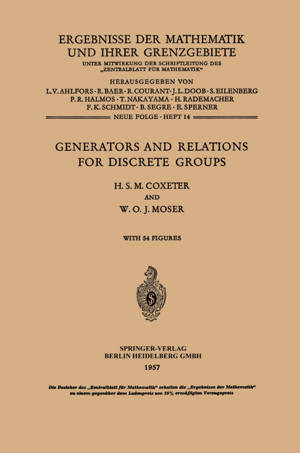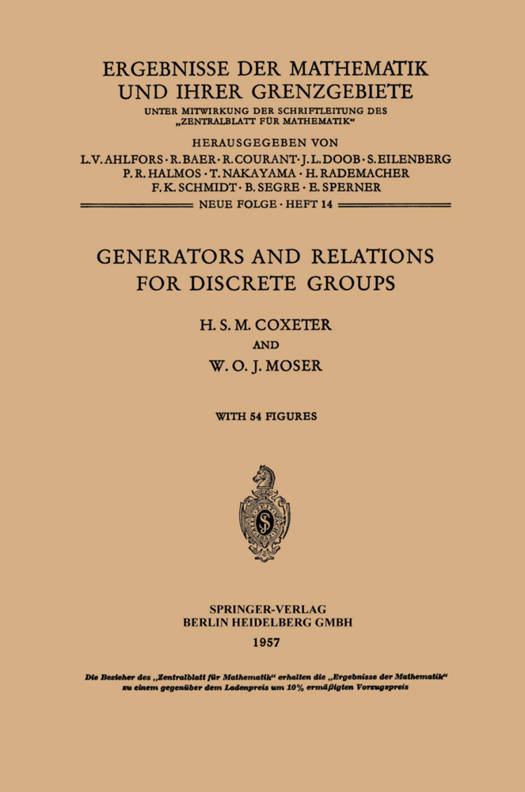
- Afhalen na 1 uur in een winkel met voorraad
- Gratis thuislevering in België vanaf € 30
- Ruim aanbod met 7 miljoen producten
- Afhalen na 1 uur in een winkel met voorraad
- Gratis thuislevering in België vanaf € 30
- Ruim aanbod met 7 miljoen producten
Zoeken
€ 84,45
+ 168 punten
Omschrijving
When we began to consider the scope of this book, we envisaged a catalogue supplying at least one abstract definition for any finitely- generated group that the reader might propose. But we soon realized that more or less arbitrary restrictions are necessary, because interesting groups are so numerous. For permutation groups of degree 8 or less (i. e., subgroups of e ), the reader cannot do better than consult the 8 tables of JosEPHINE BuRNS (1915), while keeping an eye open for misprints. Our own tables (on pages 134-143) deal with groups of low order, finiteandinfinite groups of congruent transformations, symmetric and alternating groups, linear fractional groups, and groups generated by reflections in real Euclidean space of any number of dimensions. The best substitute foramoreextensive catalogue is the description (in Chapter 2) of a method whereby the reader can easily work out his own abstract definition for almost any given finite group. This method is sufficiently mechanical for the use of an electronic computer. There is also a topological method (Chapter 3), suitable not only for groups of low order but also for some infinite groups. This involves choosing a set of generators, constructing a certain graph (the Cayley diagram or DEHNsehe Gruppenbild), and embedding the graph into a surface. Cases in which the surface is a sphere or a plane are described in Chapter 4, where we obtain algebraically, and verify topologically, an abstract definition for each of the 17 space groups of two-dimensional crystallography.
Specificaties
Betrokkenen
- Auteur(s):
- Uitgeverij:
Inhoud
- Aantal bladzijden:
- 155
- Taal:
- Engels
- Reeks:
- Reeksnummer:
- nr. 14
Eigenschappen
- Productcode (EAN):
- 9783662236543
- Verschijningsdatum:
- 1/01/1957
- Uitvoering:
- Paperback
- Formaat:
- Trade paperback (VS)
- Afmetingen:
- 156 mm x 234 mm
- Gewicht:
- 240 g

Alleen bij Standaard Boekhandel
+ 168 punten op je klantenkaart van Standaard Boekhandel
Beoordelingen
We publiceren alleen reviews die voldoen aan de voorwaarden voor reviews. Bekijk onze voorwaarden voor reviews.











